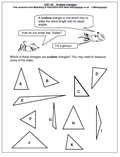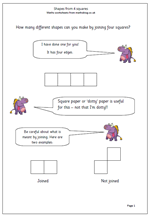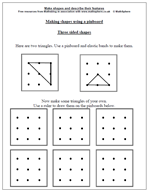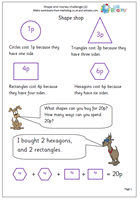This week we take another look at types of triangle. A lot of work is done on triangles in Primary Schools and by year 5 and 6 most children are familiar with the properties of right angled triangles, equilateral triangles and isosceles triangles. An equilateral triangle has all three sides equal and all three angles equal; an isosceles triangle has two equal sides and two equal angles. However, fewer children know about the scalene triangle. A scalene triangle is one which has no sides the same length and no equal angles. Right angled triangles could also be scalene if all the sides are different lengths.
Thanks to MathSphere Ltd for this worksheet: and there are many more similar pages, both on their site and part of the ‘It’s All Figured Out’ CD.
This page can be found on the blog in the Year 5 section under Shape.




